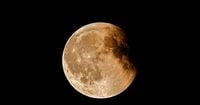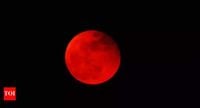The sky put on a show for the ages this past weekend, as a rare celestial event unfolded high above billions of heads across the globe. On the night of Sunday, September 7, 2025, and into the early hours of Monday, September 8, a total lunar eclipse—commonly known as a "Blood Moon"—captivated skywatchers from Asia to Europe and beyond. This was no ordinary full moon: as Earth's shadow swept across the lunar surface, the moon transformed into a haunting, deep red orb, mesmerizing nearly 85% of the world's population who had a chance to witness at least part of this spectacle.
According to NASA, a blood moon occurs during a total lunar eclipse, when the Earth positions itself precisely between the sun and the moon. The only sunlight that reaches the moon in this alignment is filtered through Earth's atmosphere, which scatters shorter blue wavelengths and lets red light pass through. This phenomenon, known as Rayleigh scattering, bathes the moon in a crimson glow, giving rise to the dramatic moniker "Blood Moon." While scientists note that "blood moon" isn’t a formal astronomical term, it certainly captures the imagination and the striking visuals of the event.
The eclipse began with the penumbral phase at 15:28 GMT on September 7, 2025. As the evening wore on, totality—the period when the moon is completely engulfed in Earth's darkest shadow—lasted an impressive 82 minutes, from 17:30 to 18:52 GMT. The entire event wrapped up by 20:55 GMT, offering an unusually long window for observers to take in the lunar drama. For many, it was a night to remember, blending scientific wonder with a sense of shared global awe.
Visibility for this eclipse was nothing short of extraordinary. Reports from multiple sources, including the Associated Press and NASA, confirmed that the blood moon was visible across Asia, Australia, Europe, and Africa. In India, the lunar eclipse began around 8:58 p.m. IST, with totality stretching from 10:00 p.m. to 11:22 p.m. IST and peaking at 11:48 p.m. IST. The event concluded at 1:25 a.m. IST on September 8. Meanwhile, Australians enjoyed the show in the early morning hours, with totality occurring between 3:31 a.m. and 4:53 a.m. AEST—though some eastern regions missed the finale as the sun began to rise.
Europeans were treated to a moonrise already in eclipse. In the United Kingdom, the moon rose eclipsed around 7:30 p.m. BST, peaked almost immediately at 7:33 p.m., and concluded by 9:55 p.m. BST. Across the continent and beyond, people gathered in cities and countryside alike to marvel at the sight. Photographers and stargazers captured stunning images of the blood moon rising behind iconic landmarks: Saint George's Castle in Lisbon, the Floating Bridge in Moscow, Kiyosu Castle in Japan, and the central pavilion of the VDNKh in Russia, among others. The Associated Press shared photos from Baghdad, Beirut, Tel Aviv, Rome, Hungary, Switzerland, Germany, Tehran, and Pakistan, underscoring the truly global reach of this event.
For many in the United States, the best views of the blood moon were found in photos from other parts of the world, as the September eclipse was not visible from North America. However, earlier in the year, North Americans had their own chance to experience a total lunar eclipse in March 2025. This recent event marked the second total lunar eclipse of the year, a relatively rare occurrence that added to the anticipation and excitement among skywatchers.
So, why does the moon turn red during a total lunar eclipse? The explanation is rooted in physics and atmospheric science. As Earth blocks direct sunlight from reaching the moon, only light that has passed through the planet’s atmosphere makes it to the lunar surface. The atmosphere acts like a giant lens, bending and filtering sunlight. Shorter blue wavelengths scatter out, while longer red wavelengths pass through and illuminate the moon, creating that signature blood-red hue. Sometimes, the moon can appear even darker or more coppery depending on the amount of dust, smoke, or haze in Earth's atmosphere at the time, as NASA notes.
The blood moon phenomenon isn’t just a treat for astronomers and photographers; it’s a moment that brings people together in collective wonder. In cities from Geneva to Rawalpindi, crowds gathered in parks, on rooftops, and at historic sites to watch the moon’s transformation. The sense of connection—knowing that billions of others were gazing up at the same red moon—added a layer of meaning to the night’s spectacle.
For those who missed the event, there’s good news on the horizon. According to astronomical forecasts cited by multiple outlets, the next total lunar eclipse—a blood moon visible in the Americas—is set for March 2-3, 2026. This upcoming event is expected to be especially exciting for North American skywatchers, who missed out on the September 2025 eclipse. With just six months to go, it’s not too early to mark your calendars, dust off your binoculars, and plan for another night under the stars.
In the meantime, the images and memories from September’s blood moon continue to circulate worldwide, serving as a reminder of our planet’s place in the cosmos and the simple, shared joy of looking up. As one observer in Tel Aviv told the Associated Press, “It’s amazing to think that people everywhere are watching the same moon at the same time. For a moment, we’re all connected.”
With the next blood moon just around the corner, the world’s collective gaze will soon return to the skies, eager for another glimpse of lunar magic.





